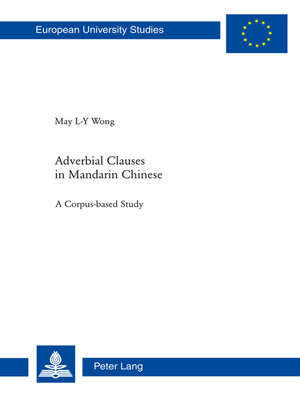Adverbial Clauses in Mandarin Chinese
ebook ∣ A Corpus-based Study · Europaeische Hochschulschriften / European University Studies / Publications Universitaires Européennes
By May Lai-Ying Wong

Sign up to save your library
With an OverDrive account, you can save your favorite libraries for at-a-glance information about availability. Find out more about OverDrive accounts.
Find this title in Libby, the library reading app by OverDrive.



Search for a digital library with this title
Title found at these libraries:
| Library Name | Distance |
|---|---|
| Loading... |
What are adverbial clauses in Chinese? Do they all have subjects as their counterparts do in English? How do the semantic domains of adverbial clauses interact with the distribution of subjects? How do Chinese corpora help us explore these intriguing questions?
The aim of this study is to demonstrate the usefulness of corpus linguistics as a methodology in grammar studies. A problem-oriented tagging approach has been used to enable the exploration of adverbial clauses in the corpus and to identify eleven semantically based classes of adverbial clauses. While it is a well-known fact that Chinese adverbial clauses (CACs) are overtly marked by a subordinating conjunction, their subjects can be left unexpressed and recovered in the prior discourse. By analysing naturally occurring spoken and written samples from various corpora, the author examines this intriguing phenomenon of overt and non-overt subjects in adverbial clauses.
The aim of this study is to demonstrate the usefulness of corpus linguistics as a methodology in grammar studies. A problem-oriented tagging approach has been used to enable the exploration of adverbial clauses in the corpus and to identify eleven semantically based classes of adverbial clauses. While it is a well-known fact that Chinese adverbial clauses (CACs) are overtly marked by a subordinating conjunction, their subjects can be left unexpressed and recovered in the prior discourse. By analysing naturally occurring spoken and written samples from various corpora, the author examines this intriguing phenomenon of overt and non-overt subjects in adverbial clauses.







